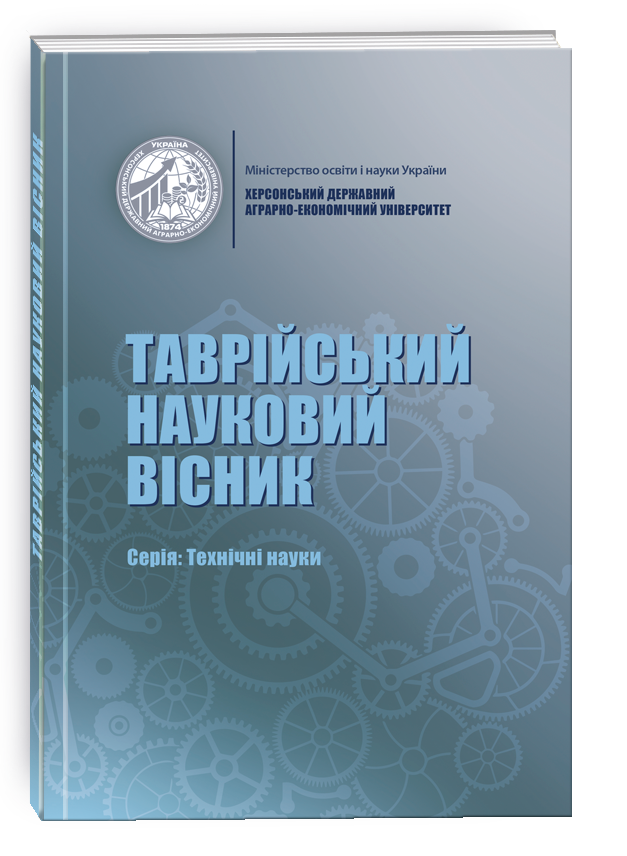MODIFICATION OF THE METHODOLOGY OF DETERMINATION OF PARAMETERS OF EQUIVALENT ELECTRICAL SCHEME OF PIEZORESONATOR ON THE BASIS OF MODEL BUTTERWORTH – VAN DYKE
DOI:
https://doi.org/10.32851/tnv-tech.2022.3.2Keywords:
quartz resonator, thickness-shear oscillations, piezoelectric element, AT-slice of quartz, equivalent electrical circuitAbstract
The article investigates the methodologys of determining the parameters of the equivalent electrical circuit (EES) of piezoelectric resonators and transducers based on models Butterworth – Van Dyke (BVD) and Sherrita. Analytical expressions for estimating the relative error in calculating the resonant frequency of piezoelectric oscillations based on the EES parameters for models are obtained BVD and Sherrita, for different cases of boundary conditions (GU), namely zero GU and GU with unilateral mass load and interelectrode interval. The results of numerical analysis to determine the relative error of the resonant frequency based on the parameters of the EPS for the models are presented BVD and Sherrita, graphs of frequency characteristics for the case of AT quartz cut at resonant frequency are constructed fs = 10 Мгц. These results and graphs show that the most common techniques are model-based BVD, have significant absolute and relative errors in determining the resonant frequency fs. It is established that the methodology based on the Sherrita model has zero relative error in determining the resonant frequency based on the EES. In addition, this technique can be used to determine the EES of piezoresonators with non-zero boundary conditions, thus eliminating the occurrence of the above errors. A modification of the methodology of determining the parameters of the EЕS based on the BVD model is proposed, which eliminates the above shortcomings, ie the further development of the BVD model is obtained. Analytical expressions for calculation of EES parameters of the modified technique are obtained, which, in contrast to the existing methodologys, take into account the dependence Ln and C0 on harmonics n. The modified methodology of determination of parameters of ЕЕС can be used for a design and planning of new resonators, filters, sensors in the devices of control of connection, control and measuring devices and in other piezo resonant oscillating systems.
References
Tiersten H.F. Linear Piezoelectric Plate Vibrations: Elements of the Linear Theory of Piezoelectricity and the Vibrations of Piezoelectric Plates. Springer US. 1995. 212 р.
Yang J. Analysis of Piezoelectric Devices. World Scientific. 2006. 520 р.
Зеленка И. Пьезоэлектрические резонаторы на объемных и поверхностных акустических волнах: Материалы, технология, конструкция, применение: Пер. с чеш. 1990. 594 с.
Mindlin R.D. High frequency vibrations of piezoelectric crystal plates. Int. J. Solids Structures. 1972. Vol. 8. P. 895–906.
Huijing H. Thickness-shear vibration of a rectangular quartz plate with partial electrodes. Acta Mechanica Solida Sinica. 2013. Vol. 26. N. 2. P. 121–128.
Wang J. Resonant frequency function of thickness-shear vibrations of rectangular crystal plates. IEEE Transactions on Ultrasonics, Ferroelectrics, and Frequency control. 2011. Vol. 58. N. 5. P. 1102–1107.
Liu N. Effects of a Mass Layer With Gradually Varying Thickness on a Quartz Crystal Microbalance. IEE Sensors journal. 2011. Vol.11. N. 8. P. 1635–1639.
Партон В.З., Кудрявцев Б.А. Электромагнитоупругость пьезоэлектрических и электропроводных тел. М.: Наука. 1988. 472 с.
Васильчук Д.П., Семенець Д.А., Романуша В.О., Кобилянський Б.Б., Нефьодова І.В. Математична модель п’єзорезонансної коливальної системи на основі матрично-операторного метода. Електромеханічні і енергозберігаючі системи. 2019. Вип. 2/2019 (46). С. 25–32.






